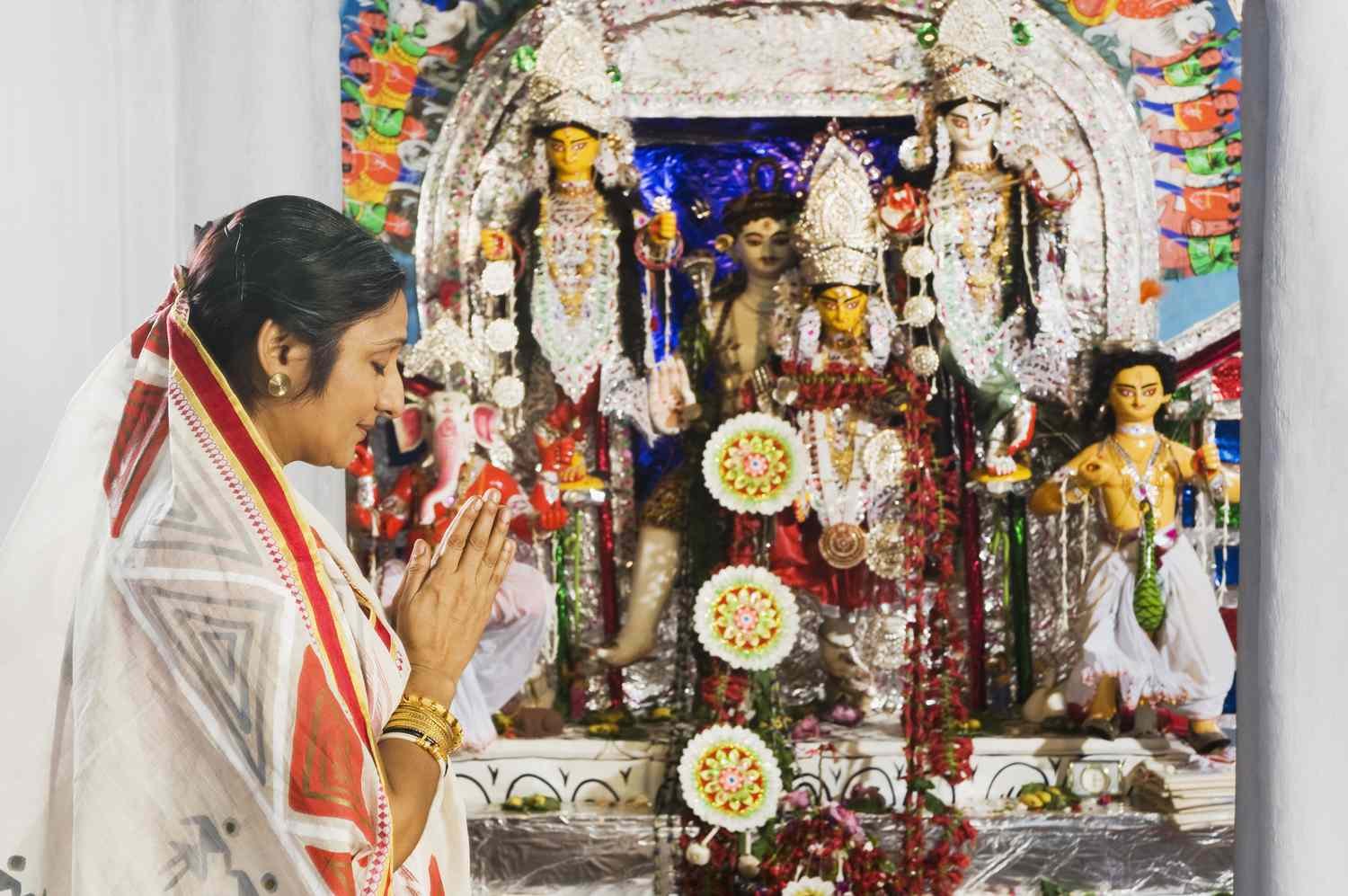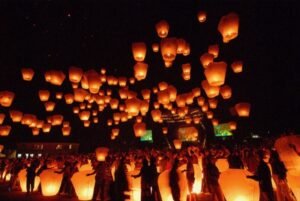Devotees keep fasts, perform puja and seek blessings of Maa Durga during nine devotional nights dedicated to the Hindu Goddess.
Temples across Indian cities are decorated during Navratri festival as Devotees visits in large numbers. The festival is very popular among Indian community around the globe. People eagerly wait for Navratri as its time for puja, celebrations and fasting for nine consecutive days with outsized celebrations both in Indian villages and cities.
Goddess Durga is the emblem of Shakti. She is the Goddess who is celebrated for killing an evil demon Mahishasura in a crusade that lasted for nine days and nine nights.
As the story goes, Mahishasura was blessed with immortality by Lord Brahma. He could only be killed by a woman. For him, women were the weaker ones and he was confident that he would never die as if he was a God.
Taking advantage of this blessing out of self-conceit, he and his men started attacking people on earth. No God was able to kill him.
After this, Lord Brahma, Vishnu and Shiv mutually decided to create Goddess Durga, a powerful woman, who will be destined to kill Mahishasura. Equipped with various weapons, she finally defeated Mahishasura when he was in the form of buffalo. This makes Navratri the celebration of Good over evil.
Day 1 – Shailaputri:
On the first day of Navratri, known as Pratipada, Shailaputri is worshipped. She is an incarnation of Parvati and is considered to be the direct incarnation of Mahakali. Shailaputri is also known as Hemavati and is considered to be a reincarnation of Sati (Shiva’s first wife).
Day 2 – Brahmacharini:
On the second day of Navratri, known as Dwitiya, Goddess Brahmacharini is worshipped. She is another incarnation of Parvati and is worshipped for emancipation or moksha and endowment of peace and prosperity. The colour code of this day is green, and sometimes the orange colour, which depicts tranquility, is used.
Day 3 – Chandraghanta:
On the third day of Navratri, known as Tritiya, Chandraghanta is worshipped. She is the embodiment of beauty and is also symbolic of bravery. The colour of the day is grey, which is a vivacious colour and can cheer up everyone’s mood. Chandraghanta got her name from the fact that after marrying Shiva, Parvati adorned her forehead with the ardhachandra (lit. half-moon).
Day 4 – Kushmanda:
On the fourth day of Navratri, known as Chaturthi, Goddess Kushmanda is worshipped. She is believed to be the creative power of the universe and is associated with the endowment of vegetation on earth, and hence, the colour of the day is orange.
Day 5 – Skandamata:
On the fifth day of Navratri, known as Panchami, Skandamata is worshipped. She is the mother of Skanda (or Kartikeya). She is depicted riding a ferocious lion, having four arms, and holding her baby.
Day 6 – Katyayani:
On the sixth day of Navratri, known as Shashtami, Katyayani is worshipped. Known as the warrior goddess, she is considered one of the most violent forms of Devi. In this avatar, Katyayani rides a lion and has four hands. She is a form of Parvati, Mahalakshmi, Mahasaraswati.
Day 7 – Kaalaratri:
On the seventh day of Chaitra Navratri, the focus is on worshipping Goddess Kalratri, who is believed to be the fiercest form of Goddess Durga. It is said that she destroys all evil forces and brings peace and positivity to the world. Devotees fast and offer prayers to her on this day.
Day 8 – Mahagauri:
On the eighth day, also known as Ashtami, the emphasis is on worshipping Goddess Mahagauri, who is depicted as a beautiful and calm goddess. She is believed to be the symbol of peace, intelligence, and purity. Devotees offer white clothes and flowers to her and seek her blessings for a peaceful life.
Day 9 – Siddhidatri:
Finally, on the ninth day, which is called Navami, the celebrations culminate with the worship of Goddess Siddhidatri, who is believed to possess all the Siddhis (divine powers) and blesses her devotees with prosperity, success, and happiness. It is also the day of Kanjak Puja, where young girls are worshipped as forms of goddesses and are offered food and gifts.







